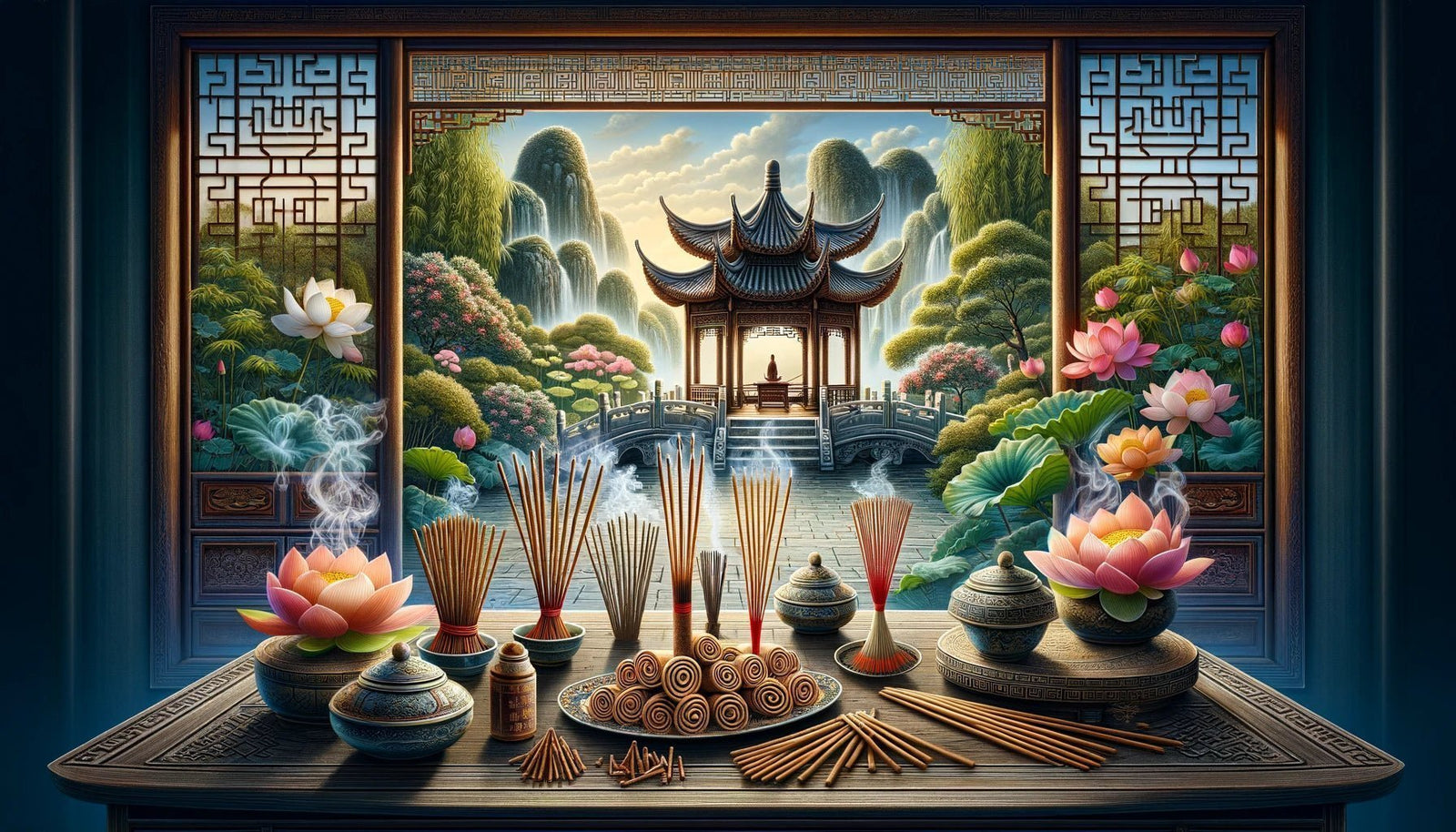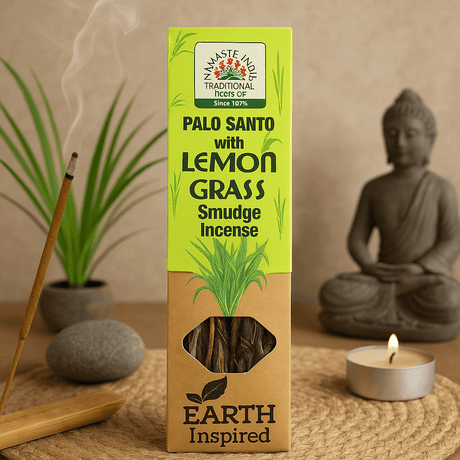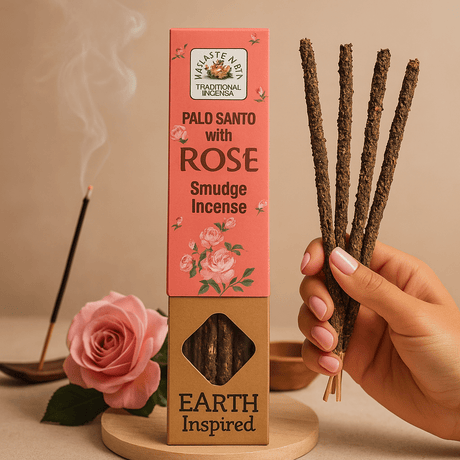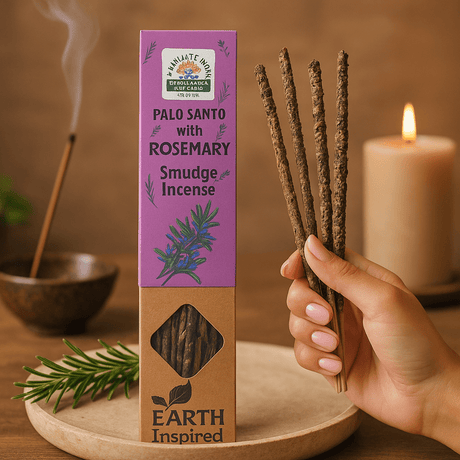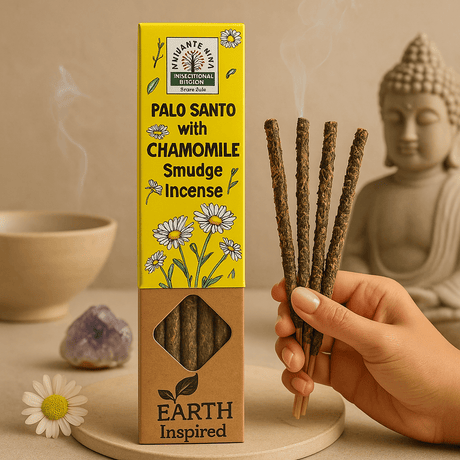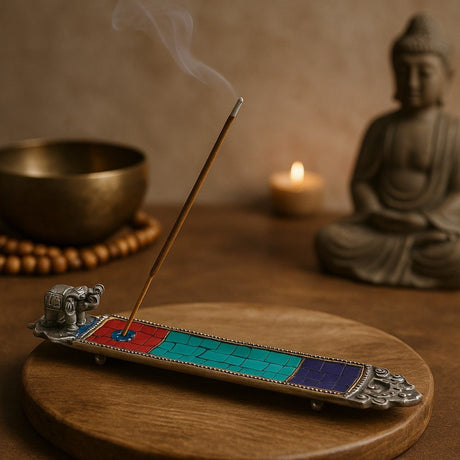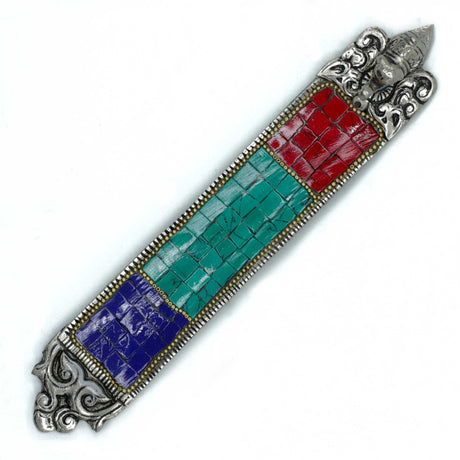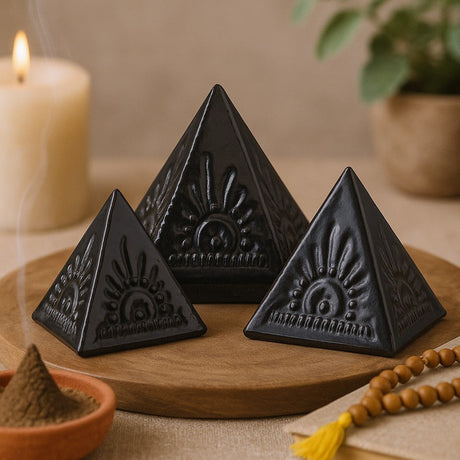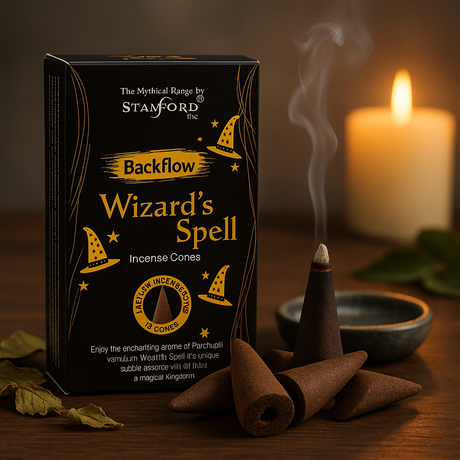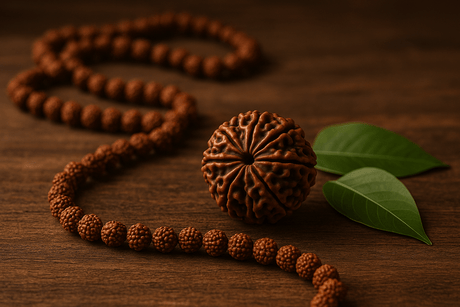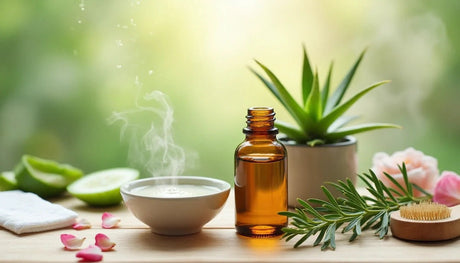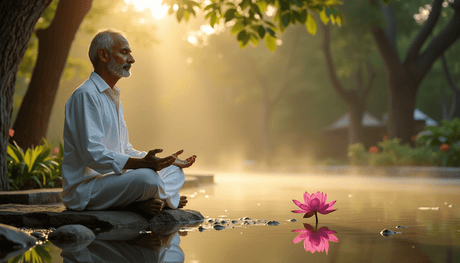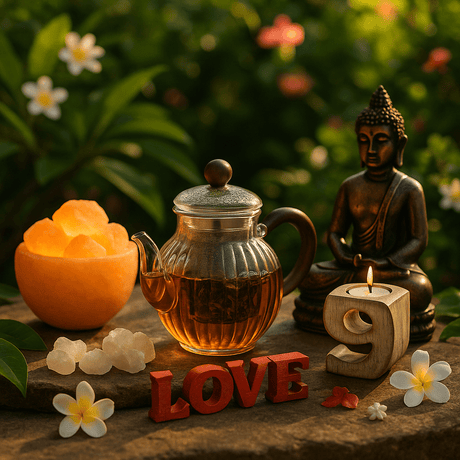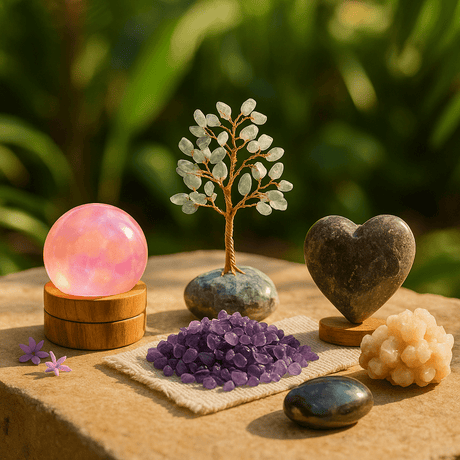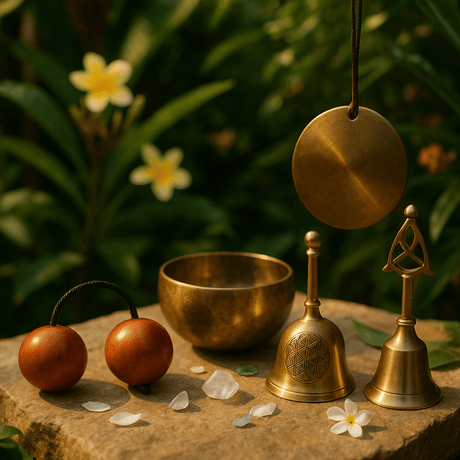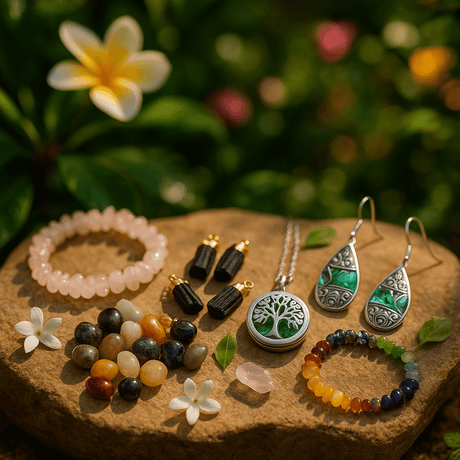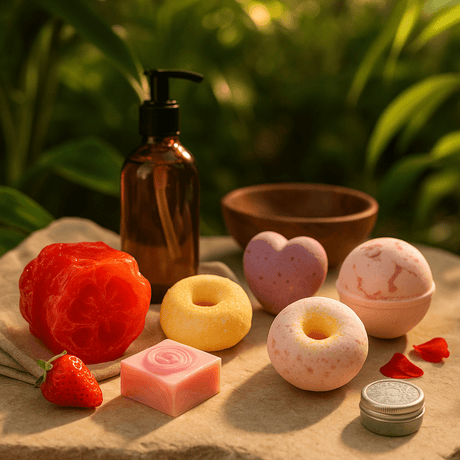In the vast tapestry of Chinese culture, few elements are as pervasive and deeply entrenched as the tradition of incense. Known as xiang (香), meaning fragrance or aroma, Chinese incense weaves through the fabric of history, spirituality, and daily life, offering an olfactory journey through time.
This article embarks on an exploration of Chinese incense, tracing its origins, delving into its diverse types, and uncovering the meticulous craft of its creation. We journey through its cultural and spiritual significance, and revel in the aromatic benefits that have been cherished for millennia.
Historical Background 🏯
The story of incense in China is a rich tapestry that dates back to the Han dynasty (206 BC–220 AD), where it began its journey as a means to fragrance rooms and garments, play a central role in Buddhist worship, and serve as a pastime for the educated elite and nobility. Incense's significance is deeply rooted in Buddhist traditions, where its use is highly valued during ceremonies — a tradition that facilitated the spread of incense practices from China to Japan.
Over the centuries, the art of incense ceremonies evolved, incorporating various tools specifically designed for these rituals. During the Song dynasty (960–1279 AD), porcelain became a favored material for incense accessories, while the Ming dynasty (1368–1644 AD) saw the introduction of Xuande copper stoves. The Qing dynasty (1644–1912 AD) continued to innovate with various incense devices, reflecting the evolving aesthetic and functional demands of incense use.
The Tang dynasty (618–907 AD) marked a period of flourishing incense culture in China, buoyed by vibrant trade, the widespread adoption of Buddhist practices, and exchanges with foreign lands. This era coincided with the emergence of the Silk Road, introducing spices like agarwood, camphor, and clove to Chinese incense making, with agarwood becoming a symbol of luxury among the royalty.
The pinnacle of incense culture was reached during the Song dynasty, as it became a sophisticated cultural pursuit among the nobility, who even built special rooms for incense ceremonies. The Imperial Court established the "Incense and Medicine Repository" to manage the importation of luxurious spices and medicinal ingredients. Incense's popularity soared, becoming integral to scholarly activities, artistic expression, and social gatherings. This tradition persisted into the Ming and Qing dynacies, embedding incense deeply into the fabric of social and everyday life.
Remarkably, during the Song dynasty, the value of agarwood was said to match that of gold, highlighting its esteemed status. Agarwood, produced in the heartwood of Aquilaria trees through a process initiated by natural damage and subsequent fungal infection, can take centuries to develop its characteristic fragrance. Today, first-grade agarwood remains one of the world's most precious natural materials, testament to the enduring legacy of incense in Chinese culture.

Types of Incense 🎋
Chinese incense captivates with its diversity, each form designed to suit various occasions, preferences, and spaces. Among the plethora of forms, sticks, coils, and cones stand out for their distinct characteristics and uses. These types not only differ in shape but also in how they release their enchanting scents, offering unique experiences and benefits.
-
Incense Sticks. The most commonly recognized form, incense sticks are slender and elegant, easy to light and perfect for daily rituals. They offer a consistent burn, releasing a steady stream of smoke and fragrance. Ideal for meditation, prayer, or simply creating a tranquil ambiance, their simplicity and ease of use make them a favorite in homes and temples alike.

-
Incense Coils. Known for their longer burn time, incense coils are a practical choice for extended ceremonies or when a continuous aroma is desired without frequent replacement. Shaped into spirals that can last for hours, they are often used in larger spaces or outdoor areas. The coils' slow-burning nature allows for a gradual release of scent, enveloping spaces in a lasting, aromatic embrace.

-
Incense Cones. Compact and shaped like small pyramids, incense cones offer a more intense fragrance experience. When lit, they smolder and emit a rich, voluminous smoke that quickly fills a room with its potent aroma. Suitable for shorter, focused sessions of meditation or relaxation, cones are appreciated for their strong scent delivery and the beautiful visual of swirling smoke they produce.

Each type of incense brings its own set of benefits, from the gentle, sustained release of sticks to the immersive aroma of cones and the enduring presence of coils. Whether seeking spiritual elevation, relaxation, or simply to enjoy the therapeutic benefits of aromatic herbs and woods, there's a form of Chinese incense tailored to every need and occasion.
Incense Making Process 🍃
The creation of Chinese incense is a meticulous and traditional art, deeply rooted in ancient practices yet embracing modern advancements. At the core of stick incense making lies the selection of bamboo, primarily sourced from the Phyllostachys heterocycla cv. pubescens variety, known for its thick wood and excellent burning properties. This bamboo, along with other types like Phyllostachys edulis, is carefully harvested and dried, chosen for its ability to burn cleanly and completely into ashes.
The manufacturing process begins with these dried bamboo poles, approximately 10 cm in diameter, which are manually trimmed, soaked, peeled, and then split into thin sticks with a square cross-section of less than 3mm. Although traditionally performed by hand, much of this labor-intensive work has shifted to machines in contemporary incense production, streamlining the process while maintaining quality.
Following the preparation of bamboo sticks, the next steps involve:
- Blending Natural Ingredients: Aromatic herbs, resins, and woods are finely ground and mixed with makko powder — a natural binder derived from the bark of the Tabu-no-ki tree, ensuring the mixture adheres properly and burns evenly.
- Kneading the Incense Dough: The blend is then combined with water to form a dough-like consistency, carefully kneaded to ensure uniformity of the scent and texture.
- Forming the Incense Sticks: The dough is either hand-rolled around the bamboo sticks or extruded through machines designed to precisely shape the incense.
- Straightening and Drying: Freshly shaped incense sticks are straightened to prevent bending and then laid out to dry, a crucial step that solidifies their form and stabilizes the fragrance.
This process, from bamboo selection to the final drying stage, reflects a balance between traditional craftsmanship and modern efficiency, ensuring that each incense stick not only carries the rich aromas of its natural ingredients but also embodies centuries of cultural heritage and artistry.

Cultural and Spiritual Significance 🏯
In Chinese culture, incense is more than a mere fragrance; it is a sacred bridge between the earthly and the divine, deeply woven into the fabric of spiritual and daily life. This ancient practice purifies and sanctifies, creating a conduit for prayers and thoughts to ascend, seamlessly blending the temporal with the spiritual. The act of burning incense, particularly in meditation, serves as a profound guide to deeper contemplation and relaxation, marking it as an indispensable part of spiritual and mindfulness practices.
Incense and Meditation
The symbiosis between incense burning and meditation is profound. Incense marks the beginning of a meditative journey, its fragrance setting a serene atmosphere that invites calm and focus. The aromatic scents are believed to facilitate concentration, easing the mind into a state of deep tranquility. This sensory experience enhances the meditative practice, making the act of burning incense a ritualistic preparation that signals the mind and body to enter a space of mindfulness and spiritual engagement.
Incense in Ceremonial Use
Incense's role extends to religious ceremonies and festivals, where it acts as an essential element in rituals, symbolizing purification and the connection to the divine. In temples and homes, incense burning signifies respect and veneration, its smoke carrying prayers to the heavens. The practice is a testament to the belief in incense's power to cleanse, protect, and elevate, making it a vital part of celebrations and solemn observances alike.
Medicinal and Therapeutic Uses
Echoing the principles of Traditional Chinese Medicine, incense shares ingredients and techniques with healing practices. Notable examples include the use of camphor in incense, recognized for its ability to dispel negative energies and aid in various health conditions. Such uses underscore incense's role in promoting physical and psychological well-being, blending the spiritual with the therapeutic.
Incense as a Timekeeper
With the advent of Buddhism in China, incense found a new role as a timekeeper. The innovation of calibrated incense sticks and clocks allowed for the measurement of time in a manner that was both practical and spiritually significant. This practice illustrates the multifaceted uses of incense, embedding it further into the cultural and daily life of the Chinese people.
A Symbol of Religious Devotion
Beyond Buddhism, incense is used across various religious traditions, including ceremonies by the Sunni Muslim Hui Gedimu and the Yihewani, showcasing its widespread spiritual significance. Such practices highlight the inclusive nature of incense as a tool for worship and devotion, transcending religious boundaries.
Incense as an Art Form
Finally, incense burning in China has evolved into an art form known as xiangdao, comparable to tea ceremony and calligraphy. This sophisticated practice involves an array of tools and techniques, designed to elevate personal spaces and accompany other arts. It represents the culmination of incense's cultural journey, from a simple aromatic to a symbol of aesthetic and spiritual sophistication.
Through its various applications — from meditation and religious ceremonies to its roles in medicine, timekeeping, and art — incense remains a cornerstone of Chinese heritage, embodying the essence of cultural and spiritual life.

The Aromatic Guide 🎋
Beyond its cultural and spiritual uses, Chinese incense is celebrated for its therapeutic benefits. From calming the mind to aiding in meditation, the scents of incense are more than just pleasant aromas; they are a bridge to well-being. Traditional Chinese medicine has long recognized the healing properties of incense ingredients, using them to treat a range of ailments.
| Scent | Description | Healing Properties |
|---|---|---|
| 🌿 Sandalwood (檀香) | Warm, rich, and woody | Calms the mind, promotes relaxation |
| 🍃 Agarwood (沈香) | Deep, complex, and resinous | Enhances mental clarity, relieves anxiety |
| 🌺 Frankincense (乳香) | Sweet, woody, and citrusy | Reduces stress, boosts immunity |
| 🌼 Cloves (丁香) | Spicy and warming | Antiseptic, pain relief |
| 🌟 Star Anise (八角) | Licorice-like, sweet | Digestive aid, relieves cramps |
| 🍂 Cinnamon (桂皮) | Warm, spicy, and sweet | Anti-inflammatory, boosts circulation |
| 🌲 Cedar (翠柏) | Fresh, woody, and balsamic | Purifies air, reduces stress |
| 💮 Camphor (樟腦) | Cool, penetrating, and fresh | Relieves respiratory congestion, disinfects |
| 🔮 Amber (琥珀) | Warm, rich, and earthy | Promotes healing, balances emotions |
| 🍁 Spikenard (甘松) | Musky, earthy | Sedative, promotes skin health |
| 🌱 Ligusticum (川芎) | Spicy, herbal | Stimulates blood flow, relieves pain |
| 🌾 Eleutherococcus (五加) | Woody, slightly sweet | Boosts energy, immune support |

Conclusion 🏮
The art of Chinese incense stands as a powerful testament to how fragrance can bridge connections, foster healing, and ignite inspiration. Its rich tapestry, woven through millennia, showcases diverse forms and profound cultural significance, ensuring incense's continued relevance in the fabric of Chinese life. By embracing the ancient scents, we not only honor a tradition that nourishes the spirit but also enrich our collective world with its timeless beauty and serenity.
At SHAMTAM, we invite you to explore this ancient tradition with our extensive collection of Chinese incenses. Whether you seek to deepen your meditation practice, add a spiritual dimension to your daily routine, or simply enjoy the therapeutic benefits of exquisite aromas, SHAMTAM has something to offer everyone. Discover the perfect scent to elevate your space and spirit. Visit us and choose from our carefully curated selection, and let the timeless art of Chinese incense enhance your life today.
